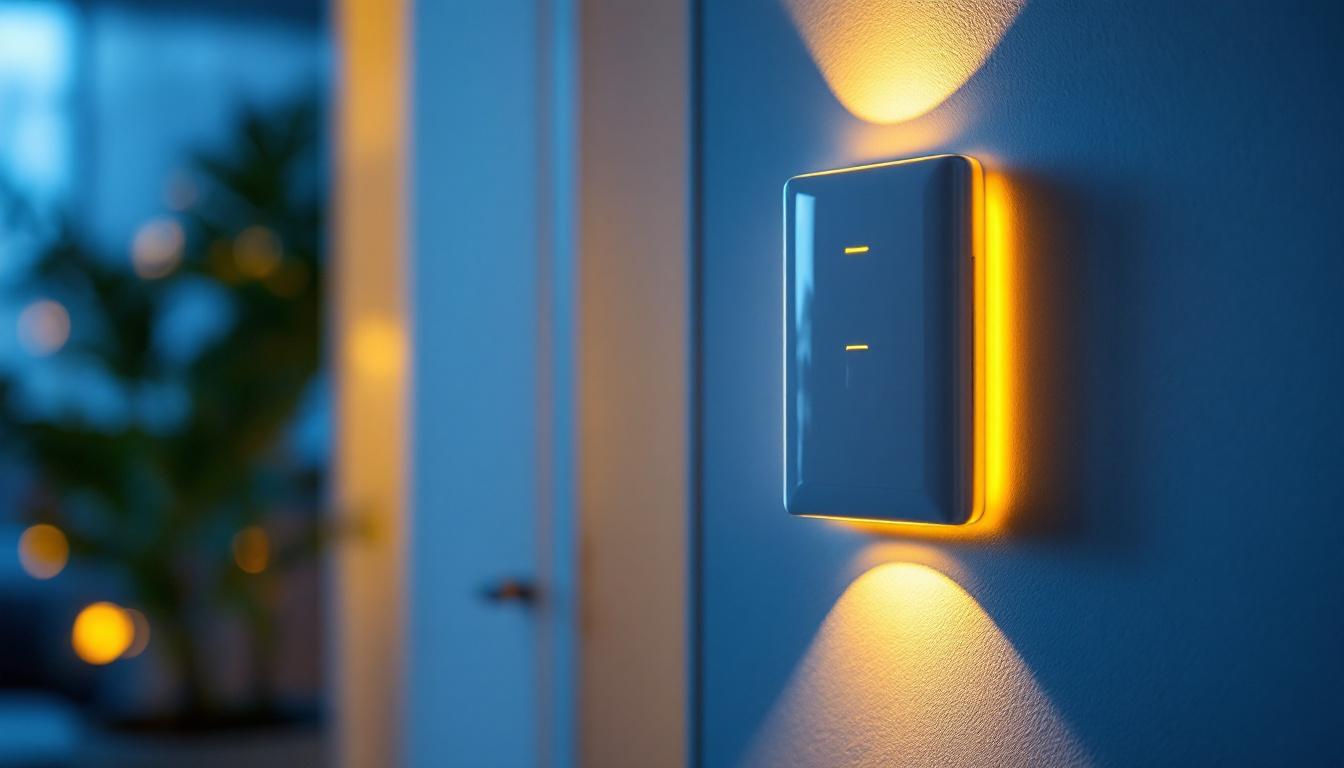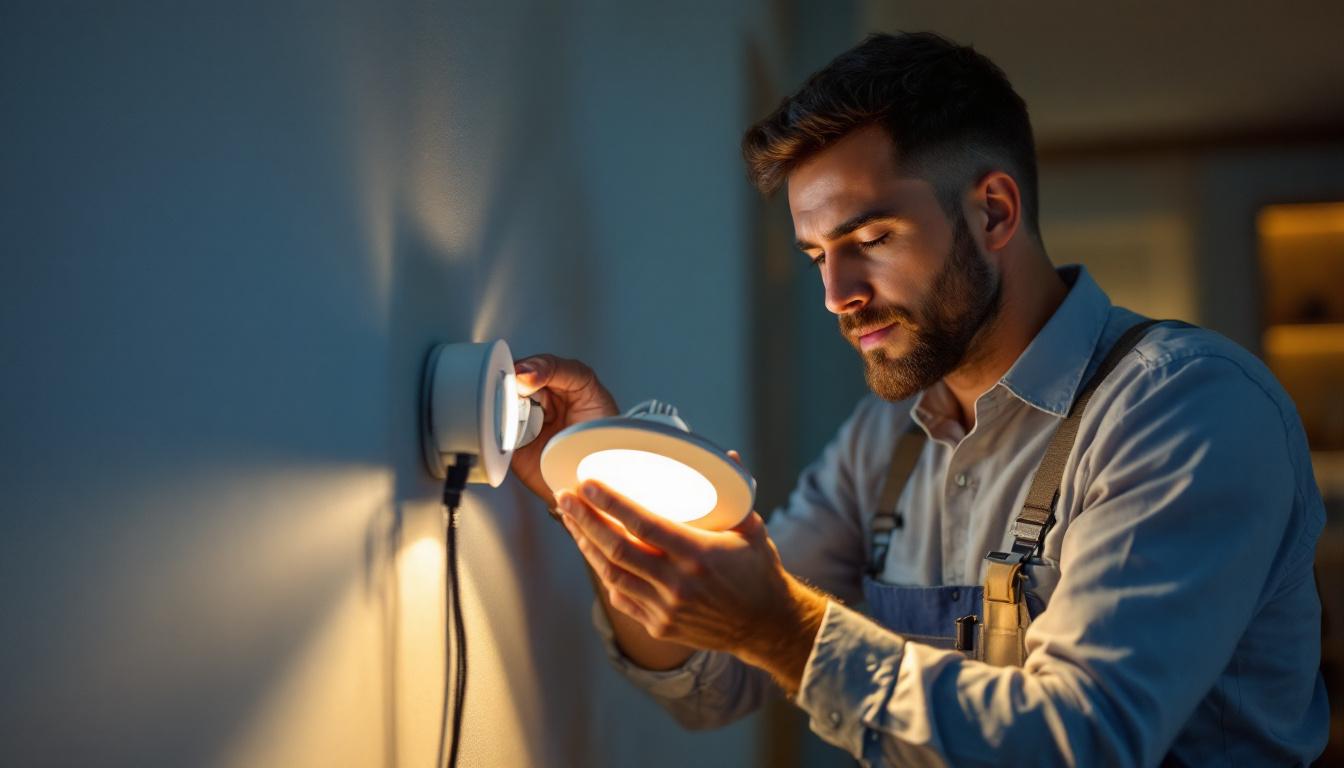
The evolution of lighting technology has paved the way for innovative solutions that not only enhance the aesthetic appeal of spaces but also contribute significantly to energy efficiency. Among these advancements, the introduction of smart light switches stands out as a game-changer for both residential and commercial lighting applications. This article delves into the importance of these new light switches, their features, and how they can be integrated into various lighting systems.
Smart light switches are designed to replace traditional switches, enabling users to control their lighting through various means, including mobile applications, voice commands, and automation systems. This technology offers a seamless blend of convenience and energy efficiency, making it an attractive option for lighting contractors and homeowners alike.
One of the most significant advantages of smart light switches is their ability to be programmed for specific lighting schedules. This feature allows users to set timers for when lights should turn on or off, ensuring that lights are only used when necessary. Additionally, many smart switches are compatible with energy-efficient LED bulbs, which further enhances their energy-saving capabilities.
Another notable feature is remote access. With smart light switches, users can control their lighting from anywhere using their smartphones. This capability is particularly beneficial for those who may forget to turn off lights when leaving home, as they can do so remotely, reducing unnecessary energy consumption. Moreover, some models offer geofencing capabilities, which can automatically turn lights on or off based on the user’s location, providing an even more intuitive experience.
Smart light switches can be easily integrated into existing home automation systems. This integration allows for coordinated control of lighting with other smart devices, such as thermostats, security systems, and smart speakers. For instance, a homeowner can set up a routine where lights automatically dim when a movie starts or turn off when the security system is activated. This interconnectedness not only enhances user experience but also contributes to a more cohesive smart home environment.
Furthermore, many smart switches are designed to work with popular voice assistants, enabling hands-free control. This feature adds an extra layer of convenience, especially in spaces where manual operation may be cumbersome. Users can simply say, “Turn on the living room lights,” and enjoy instant illumination without lifting a finger. Additionally, some smart switches offer customizable settings, allowing users to create specific lighting scenes that can be activated with a single command, perfect for entertaining guests or setting the mood for a quiet evening at home.
Energy efficiency is not just a trend; it is becoming a necessity in today’s world. As lighting contractors, understanding the benefits of energy-efficient lighting solutions can significantly impact project outcomes and client satisfaction.
Implementing smart light switches can lead to substantial cost savings for clients. By optimizing lighting usage, these switches can reduce energy bills significantly. Clients will appreciate the long-term financial benefits, making smart switches an attractive selling point for contractors.
Moreover, many utility companies offer rebates and incentives for energy-efficient upgrades, which can further enhance the appeal of smart lighting solutions. Contractors can leverage these incentives to provide clients with a comprehensive understanding of the potential savings associated with smart light switches. Additionally, by installing energy-efficient systems, contractors can help clients avoid the rising costs of traditional energy sources, ensuring that their investments yield returns over time.
Reducing energy consumption not only benefits individual clients but also contributes positively to the environment. By promoting the use of energy-efficient lighting solutions, contractors play a crucial role in decreasing overall energy demand and reducing carbon footprints.
Smart light switches facilitate this by encouraging users to adopt more sustainable lighting practices. As awareness of environmental issues continues to grow, clients are increasingly seeking solutions that align with their values. Contractors who provide energy-efficient options can position themselves as leaders in sustainability within the industry. Furthermore, the shift towards energy-efficient lighting can lead to a decrease in the reliance on fossil fuels, which are a major contributor to greenhouse gas emissions. This transition not only supports local ecosystems but also fosters a healthier community, as cleaner air and reduced pollution levels enhance the quality of life for everyone.
While the benefits of smart light switches are clear, proper installation is essential to ensure optimal performance. Lighting contractors should be well-versed in the installation process to avoid common pitfalls and maximize the advantages of these devices.
Before installation, it is crucial to assess the existing wiring in a home or building. Smart light switches often require a neutral wire to function correctly, which may not be present in older homes. Contractors should be prepared to address these wiring issues, either by recommending upgrades or selecting switches that do not require a neutral wire.
Additionally, understanding the load capacity of the switch is vital. Different switches have varying load limits, and exceeding these limits can lead to malfunction or even safety hazards. Contractors should ensure that the selected smart switch is compatible with the lighting load it will control. It is also important to consider the types of bulbs being used, as some smart switches may not work well with certain LED or CFL bulbs, potentially causing flickering or dimming issues. Therefore, a thorough evaluation of the entire lighting system is necessary to ensure compatibility and functionality.
Once the installation is complete, educating clients on how to use their new smart light switches is essential. Providing a clear demonstration of the features and functionalities can enhance user experience and satisfaction. This education can include how to set schedules, integrate with other smart devices, and troubleshoot common issues.
Offering ongoing support can also be a valuable service. Clients may have questions or require assistance as they become accustomed to their new technology. By being available for support, contractors can build trust and foster long-term relationships with their clients. Additionally, providing written materials or digital guides can serve as a helpful reference for clients in the future. This could include tips on optimizing energy efficiency, utilizing voice control features, or even customizing settings to suit their lifestyle. As smart home technology continues to evolve, staying informed about updates and new features can also empower clients to make the most of their investment.
With a plethora of options available in the market, selecting the right smart light switch can be overwhelming. Contractors should consider several factors to ensure they recommend the best products to their clients.
One of the first considerations should be compatibility with existing home automation systems. Many smart switches are designed to work within specific ecosystems, such as Google Home or Amazon Alexa. Understanding a client’s current setup will help in recommending switches that seamlessly integrate into their home.
Additionally, some switches offer unique features such as dimming capabilities or multi-way switching, which can be beneficial in certain applications. Contractors should assess the specific needs of each project to recommend the most suitable options.
Quality should never be compromised when selecting smart light switches. Contractors should prioritize reputable brands known for their reliability and performance. Reading reviews and seeking recommendations from other professionals in the field can provide valuable insights into which products stand out in terms of durability and functionality.
Moreover, considering warranties and customer service options can further ensure that clients receive a quality product that will stand the test of time. A reliable switch not only enhances user experience but also minimizes potential callbacks for contractors.
The lighting industry is continuously evolving, and staying informed about emerging trends is crucial for contractors looking to remain competitive. As technology advances, several trends are shaping the future of lighting solutions.
As artificial intelligence (AI) continues to develop, the integration of AI into lighting systems is becoming more prevalent. Smart light switches may soon feature advanced algorithms that learn user habits and preferences, automatically adjusting lighting based on patterns. This level of automation can further enhance energy efficiency and user convenience.
Additionally, AI-driven systems can provide data analytics, allowing users to monitor their energy consumption and make informed decisions about their lighting usage. Contractors who understand and embrace these advancements will be better positioned to offer cutting-edge solutions to their clients.
Another emerging trend is the emphasis on health and well-being in lighting design. Research has shown that lighting can significantly impact mood, productivity, and overall well-being. Smart light switches that allow users to adjust color temperatures and brightness levels can create environments that promote comfort and productivity.
Contractors should be aware of this trend and consider recommending smart switches that offer tunable white light or color-changing capabilities. By aligning lighting solutions with the well-being of occupants, contractors can provide added value to their clients.
The introduction of smart light switches represents a significant advancement in lighting technology, offering numerous benefits for energy efficiency, convenience, and user experience. For lighting contractors, understanding the features, installation considerations, and future trends associated with these devices is essential for staying competitive in the industry.
By recommending smart light switches, contractors can help clients achieve substantial cost savings, reduce their environmental impact, and enhance their overall quality of life. As the demand for energy-efficient solutions continues to grow, embracing this technology will not only benefit clients but also position contractors as leaders in the evolving lighting landscape.
Ready to elevate your lighting game and pass on the savings to your clients? At LumenWholesale, we specialize in providing contractors with the highest quality, spec-grade lighting products at unbeatable wholesale prices. Say goodbye to local distributor markups and hello to our extensive selection that meets rigorous industry standards. With free shipping on bulk orders, you can stock up on smart light switches and other premium lighting solutions without any hidden fees. Don’t compromise on quality or value—choose LumenWholesale for the perfect blend of affordability and convenience. Discover wholesale lighting at the best value today.

Discover why the A19 bulb is a must-know for lighting contractors.

Discover why the 3-inch LED downlight is a game-changer for lighting contractors.

Discover expert insights from lighting contractors on choosing and installing garage wall lights.

Discover the essential best practices lighting contractors rely on for installing pot light bulbs.